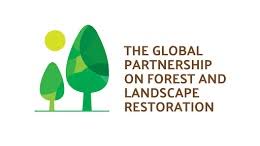A pilot project in Chile explores how to ensure that farmers are properly rewarded for managing their land and livestock in ways that safeguard supplies of clean drinking water to users further downstream.*
The project on Chiloé Island is part of efforts by the Forest Stewardship Council to expand its forest certification for a wide range of ecosystem services. This could promote sustainable forest management and social development around Chile’s natural and planted forests.
The Mechaico River and Quilahuilque River basins provide drinking water for 40,000 people in the town of Ancud, and a further 65,000 tourists during the holiday season. But in recent years there have been escalating problems with the water’s quality and quantity, largely caused by deforestation and forest degradation. The forested land in the river basin is owned by low-income farmers, who have traditionally used it for rearing livestock and establishing small farms.
The project aimed to design a payment for ecosystem services model under which the management activities of farmers upstream restored the watershed and protected the water supply for beneficiaries downstream.
Farmers have defined and implemented a range of measures to manage water quality and carry out forest restoration. These included building fences to keep cattle away from streams, creating new drinking points inside cattle enclosures, and re-foresting degraded areas. Some measures indirectly improve forest management. For example, improving pastures by digging ditches that combat erosion and improve water infiltration ultimately reduces the need for cattle to forage in the forests.
As well as introducing restoration measures, the project sought to establish a business model. Initially, it envisaged downstream users paying a premium on their water bills to support the farmers. However, the reluctance of water users to pay more has seen a different model emerge: farmers rewarded through a water fund established via an agreement between the local water company and other stakeholders. The fund would be based on contributions from the company, plus other potential donors such as non-government organizations
The impacts of the farmers' watershed restoration activities on water quality will be measured using the Forest Stewardship Council’s draft Ecosystem Services Procedure. Because activities began on the ground in 2017, water quality impacts have not yet been measured. In the meantime, a third-party auditor has verified that watershed services are being restored through measures aimed at improving water quality. Through this process, the site also became certified.

